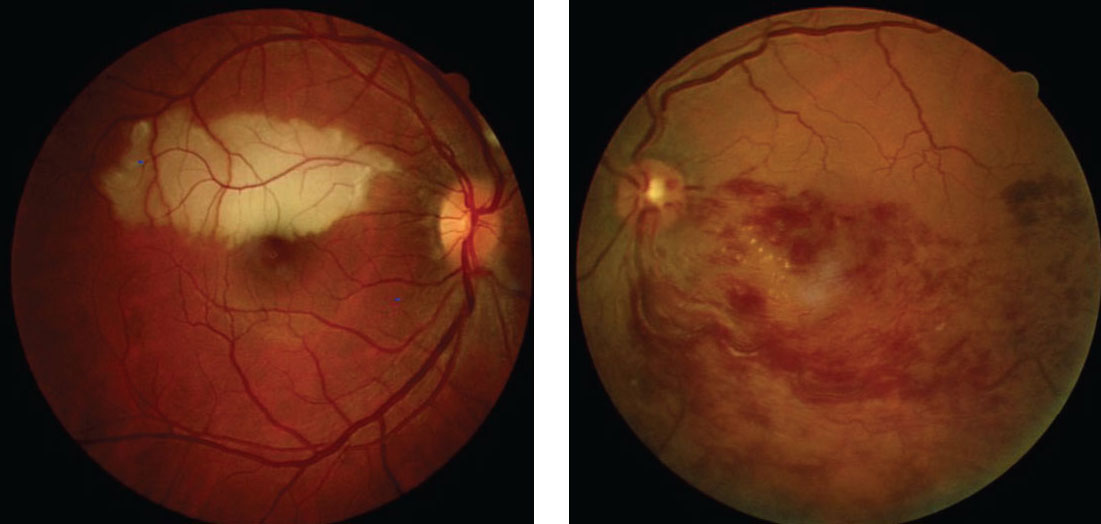 |
|
Tobacco use can contribute to problems in the eye's vasculature system, including branch retinal artery occlusion. Image courtesy of Nicholas Karbach, OD, Natalia Kobrenko, OD, Marc Myers, OD and Andrew S. Gurwood, OD. Click image to enlarge. |
Visual disturbances tend to be more common in older adults who smoke and live in high-altitude environments, which affect the visual system and cause corneal thickness changes and high-altitude dry eye syndrome, among other conditions. Researchers recently aimed to determine the relationship between tobacco consumption and self-reported visual impairment in high-altitude areas.
In total, 413 patients aged 60 years and older from 11 high-altitude Andean communities (altitude higher than 1,500m above sea level) participated in this study.
Of the smokers, 83% reported having visual impairment. The incidence of tobacco consumption was 11% in the high-altitude Andean areas, which were associated with a high probability of visual impairment. Visual impairment was also more frequent in individuals who took alternative medicine, went directly to a drug store without primary care physician consultation, had more than one comorbidity and consumed coffee.
Additionally, the education level in more than 80% of the participants was only of an elementary level, which is consistent with a previous study’s findings that noted 82.7% of older adults in high-altitude communities had no education or incomplete elementary schooling.
“This is important to take into account because people with a higher education are generally healthier, have fewer comorbidities and live longer than people with less education,” the authors explained in their study. “Only 35.2% of all the participants reported having no comorbidities, which is comparable to another study in a very similar population in which the absence of comorbidities was 44% and may be due to the similar demographic characteristics and inequities of health services in the study areas.”
Coffee consumption has also been linked to the development of ocular disease, the authors noted, “which is thought to occur by mechanisms such as the induction of oxidative stress through the intraocular formation of oxygen-free radicals.”
“Even though coffee contains antioxidants, they are destroyed while roasting the raw coffee beans before preparation, explaining the under-protection of oxidative stress,” the authors explained. A previous study showed that the level of reported visual disturbances increased after an increase in caffeine dosage, which is most likely explained by the interaction of caffeine with structural properties of the visual cortex.
“Another study demonstrated that in patients at risk for primary open-angle glaucoma, having only one cup of caffeinated coffee statistically increases intraocular pressure and ocular perfusion pressure without clinical impact,” they noted. “This information helps in understanding the multifactorial causes of visual impairment in our population and the risk induced by harmful habits such as coffee intake.”
The authors suggest primary care doctors perform more effective screenings in the management of visual diseases and refer to specialists when appropriate in a timelier manner.
Paitan-Quispe EN, Perez-Castillo KH, Camacho-Caballero K, et al. Association between tobacco consumption and self-reported visual impairment in adults of high-altitude Andean communities of Peru. Gerontol Geriatr Med. August 18, 2021. [Epub ahead of print]. |

